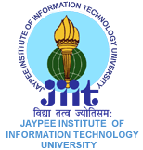
|
 | |
|
| ||
| Title of the Talk | : |
Tracking mobile targets using energy-constrained sensor networks | |
|
Speaker |
: |
Professor Bijendra Jain - IIT Delhi
Professor Bijendra Jain obtained B. Tech. from IIT Kanpur in 1970, and Ph. D. from SUNY, Stony Brook in 1975, both in Electrical Engg. Since 1975 he has been with IIT Delhi, where he is presently Deputy Director (Faculty) and Professor of Computer Science. In the past he has held visiting assignments with Universities of Texas and Maryland, Bell Labs, and Cisco Systems. Presently, he is a Gledden Senior Visiting Fellow at University of Western Australia. His interest is in Computer Networks and Systems, including network models and analysis, algorithms for large sparse matrix operations, scheduling algorithms for hard real-time systems, fault-tolerant routing. His recent interest is, however, in ad hoc and sensor networks. His research is funded in part by Government of India, UNDP, US Army, Sun Microsystems, Microsoft and Media Lab Asia. As early as 1989, Prof. Jain, together with developers from other institutions in India, built and launched India’s first data network, ERNet. Today, ERNet is a thriving not-for-profit company connecting over a million users spread across over 2000 institutions in India. He is a co-inventor in seven US patents, assigned to Cisco Systems. These cover methods to speed-up access to Web pages and efficient monitoring of IP network performance. He has co-authored “OSI: Its Architecture and Protocols”, a book published by McGraw Hill, New York. He is an active industry consultant. He is also a member of several Government committees, including Naval Research Board. Lastly, Professor Jain is a co-founder and past-Chairman of Kritikal Solutions, a technology start-up incubated on IIT Delhi campus and one which is focused on computer vision, embedded systems and networks. |
|
|
Abstract |
: |
In this talk we first give a general overview of sensor networks and their applications. But for most part of the talk we consider the problem of tracking mobile targets using energy-constrained sensor networks. In particular, we consider the problem of estimating the location of a moving target ‘T’ in a 2D plane. We assume that it is possible for sensors to detect the presence of the target in its vicinity and to (possibly) measure the distance from/to the target. Given that available energy in sensors is at a premium, we have proposed protocols for target detection and route activation that require sensors to conserve energy by switching between ‘inactive’ and ‘active’ modes of operations, while waking-up frequently in inactive mode to evaluate the need to become active. Yet another method to save energy is to reduce the number of measurements and, as a result, the number of transmissions. We therefore propose that energy be conserved by (a) requiring that a sensor switch to an ‘inactive’ mode whenever feasible, and (b) selecting fewer but adequate number of sensors that measure distance and communicate with the central tracker. Given an adequate spread of sensors, and an ability to only detect presence or absence of the target within its vicinity in a timely manner, it is feasible to obtain an approximate trajectory of a mobile target as a function of time. Alternatively, distance measurements from several such sensors may be used to estimate the location of the target T at a point of time. Clearly, the latter approach is expected to track the target more accurately. However, it will necessarily require that there be at least three sensors within the vicinity of the target and, therefore, this approach requires a significantly greater density of sensors. The error in estimating location of the target using distance measurements from multiple sensors is shown to be dependent on two measures viz. proximity of sensors to the target, and co-linearity of sensors. We also propose a new measure, ideal direction for selecting a 3rd sensor, given locations of 2 sensors and the location of the target. We propose algorithms to estimate the track of the target by using distance measurements from sensors selected on the basis of the above measures. Further, we evaluate all the protocols and algorithms using simulations. |
|
A-10, Sector 62, Noida-201307, Uttar Pradesh, India
Copyright © 2007 All Rights Reserved.